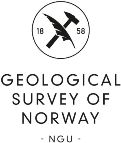

|
Norsk versjon | ||||
| THE ORE DATABASE | |||||
| Deposit Area 2021 - 015 | |||||
| (Last updated 15.feb.2005) | |||||
Name of Deposit Area : Storfossen |
| (Object Id : 2021,015,00,00) |
| Location |
| County : | Finnmark (20) | Municipality : | Karasjok (2021) |
| Map 1:50000: | Iesjåkka (2033-4) | Map 1:250000: | Karasjok |
| Marking point: | Longitude: | 24.8505920 | Latitude: | 69.3083790 |
| EU89-UTM Zone 35 | (Coordinates IS confirmed) |
| X-coord: | 415256 m. | Y-coord: | 7690235 m. |
|
|
| Commodity |
| Main Type: | Precious metals (Au,Ag,PGE) | Sub Type: | Gold | |
| Element(s): | Au |
| Production |
| Activity: | Mining | Reserves: | ||
| Prod. method: | Open pit mining | Production: | ||
| Prod. status: | Disused, closed | Volume of dump: |
| Importance |
| Public: | Little Importance (reg. 18.02.2015) |
| Economical: | Minor interest , (Confirmed 07.feb.2005 by Peter Ihlen) |
Mineralization |
| Era: | Cenozoic | Period: | Quarternary | |
| Dating: | Method: | |||
| Genesis: | Clastic sediment | Form: | Irregular | |
| Main texture: | Pore space filling | Min. distribution: | Irregular (scattered) |
| Main grain size: | Very unevenly grained | Main alteration: |
| Strike/Dip: | Direction: | |||
| Plunge: |
| Stratigraphic classification of host rock |
| Era: | Period: |
| Province: | ||
| Geotec.unit: | ||
| Tectonic complex: | ||
| Igneous complex: |
| Group: | Formation: |
Mineralogy |
| Relationship | Mineral | Amount | |
| Gangue mineral | Amphibole | Major mineral (>10%) | |
| Gangue mineral | Garnet | Subordinate mineral (1-10%) | |
| Gangue mineral | Zircon | Subordinate mineral (1-10%) | |
| Ore mineral | Hematite | Major mineral (>10%) | |
| Ore mineral | Titanomagnetite | Major mineral (>10%) | |
| Ore mineral | Pyrite | Major mineral (>10%) | |
| Ore mineral | Scheelite | Accessory mineral (<1%) | |
| Ore mineral | Rutile | Accessory mineral (<1%) | |
| Ore mineral | Gold | Accessory mineral (<1%) | |
| Ore mineral | Sperrylite | Accessory mineral (<1%) | |
| Ore mineral | Silver | Accessory mineral (<1%) |
Information(s) in free text format |
| Abstract |
| The deposit is situated near the southeastern bank of Karasjohka river about 500 m southwest of the old cabin at Gål'lebai'ke. Several pits have been developed in the Quarternery deposits around the cabin and southwestwards for about 600 m. The deposits are less than 0.5-1.5 m thick in areas where the bedrocks are reached (Bjørlykke 1966). The terrace consists of a top layer of alluvial sand rich in gold followed downwards by a 0.5-0.6 m thick unit of sand and gravel with large boulders nearly barren in gold. The best gold concentrations occur at the interface with the underlying undisturbed clay-rich blocky till. Strong gold enrichment is also encountered in the bottom of small depressions in the underlying bedrocks where the reworked unit of till is deposited directly on the bedrocks. The gold-rich top layer is assumed formed by alluvial redistibution of gold from the interface between reworked and undisturbed till. In 1966 about 5 kg of gold have been produced from the terrace which is estimated to contain 0.8-0.9 g gold per m3 of sand (Bjørlykke 1966). |
Bibliography: |
| From NGU's Reference Archive: |
| Bjørlykke, Harald , 1966 |
| De alluviale gullforekomster i indre Finnmark. |
| ;Norges geologiske undersøkelse;TIDSSKRIFTARTIKKEL;NGU; No.236;1-66 pages |
| Abstract: | |
| The first find of alluvial gold in Finnmarken was made by inspector (bergmester) Tellef Dahll in 1866 in sand from a small river named Nitusjokka near Karasjok. During the following 5 years gold deposits were found in all the rivers of the Tana river systm and the Alta and Reisa rivers. Gold has been found in small amount in all kinds of sand- and gravel deposits and also in the unwashed moraine deposits. The gold fields which have been subject to production or prospection work are situated at the upper parts of the rivers. The occurrences of alluvial gold in Finnmark may be classified in The following way: 1. Preglacial accumulations undisturbed by ice erosion during the ice age. 2: Preglacial accumulations disturbed and redeposited in moraines and fluvioglacial deposits. 3. Accumulations in postglacial river beds. The gold in these deposits seems chiefly to have been washed out from the moraines. Mineralogical analyses of the mineral composition of the gold-bearing sand and gravel have been carried out. The minerals of the gold-bearing deposits may be divided in two groups: 1. Minerals belonging to the surrounding solid rock. 2. Minerals which do not seem to belong to the solid rock in the neighbourhood of the deposits. |
| The fact sheet was created on 24.11.2024 |
| Questions or comments regarding the fact sheet can be emailed to: ressursdatabaser@ngu.no |
| Copyright © 2024 Geological Survey of Norway |